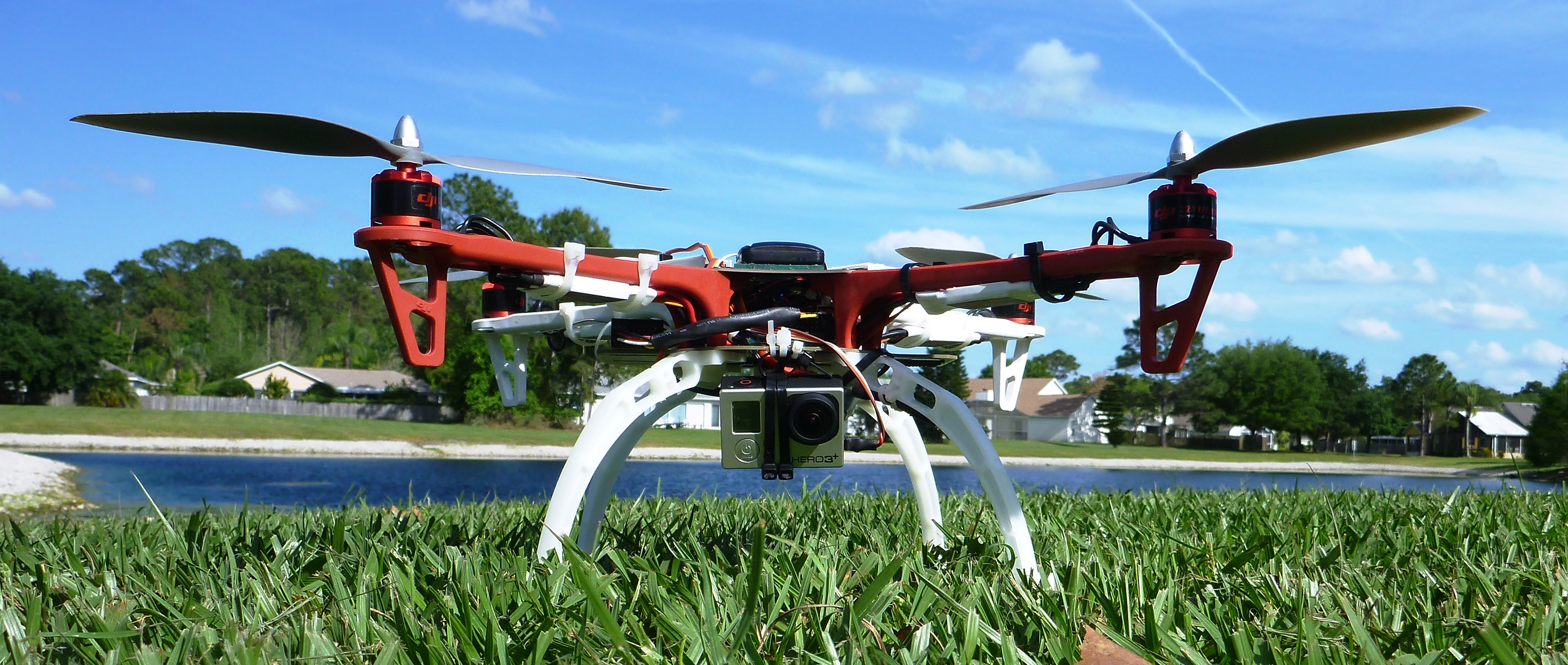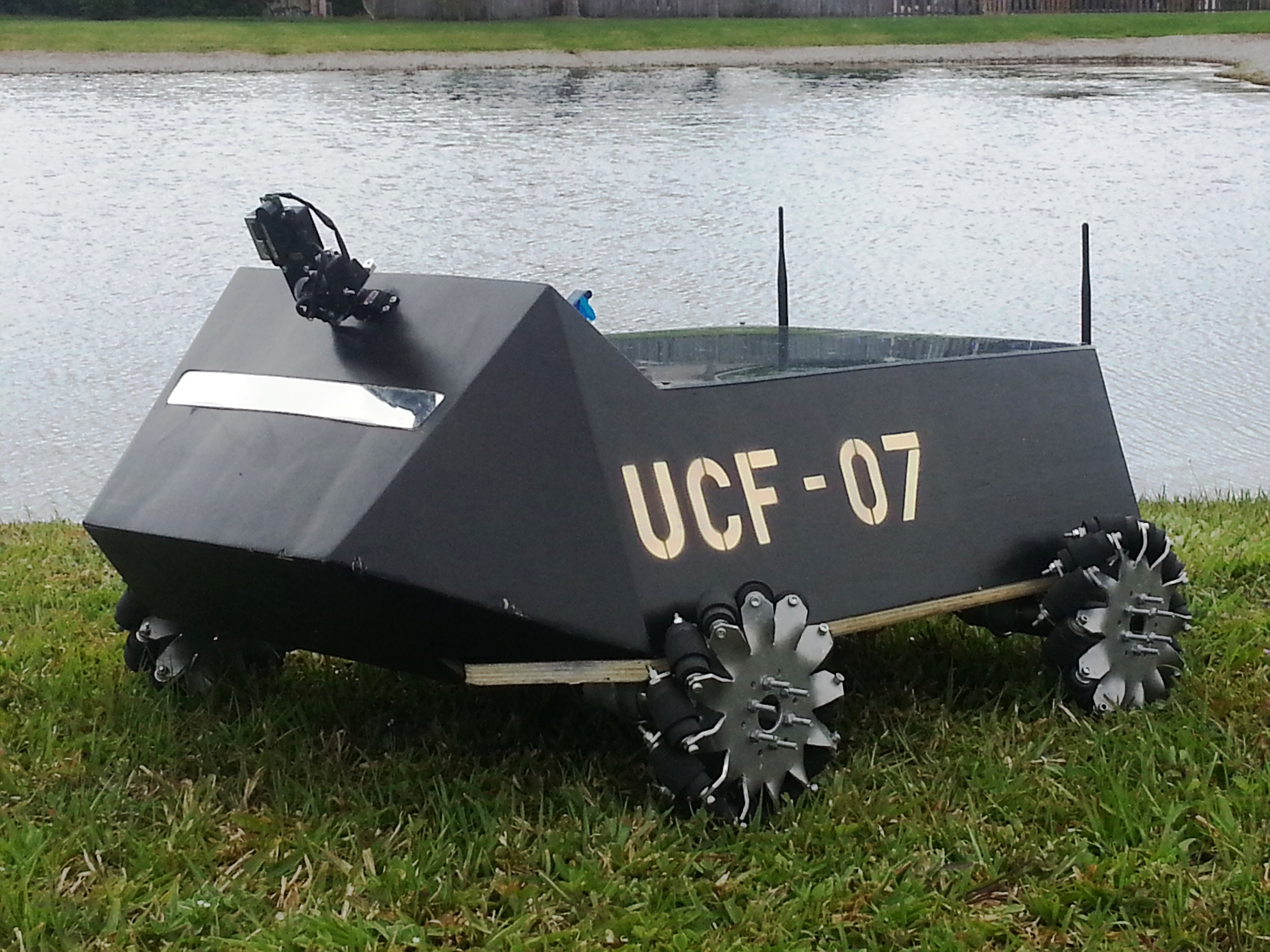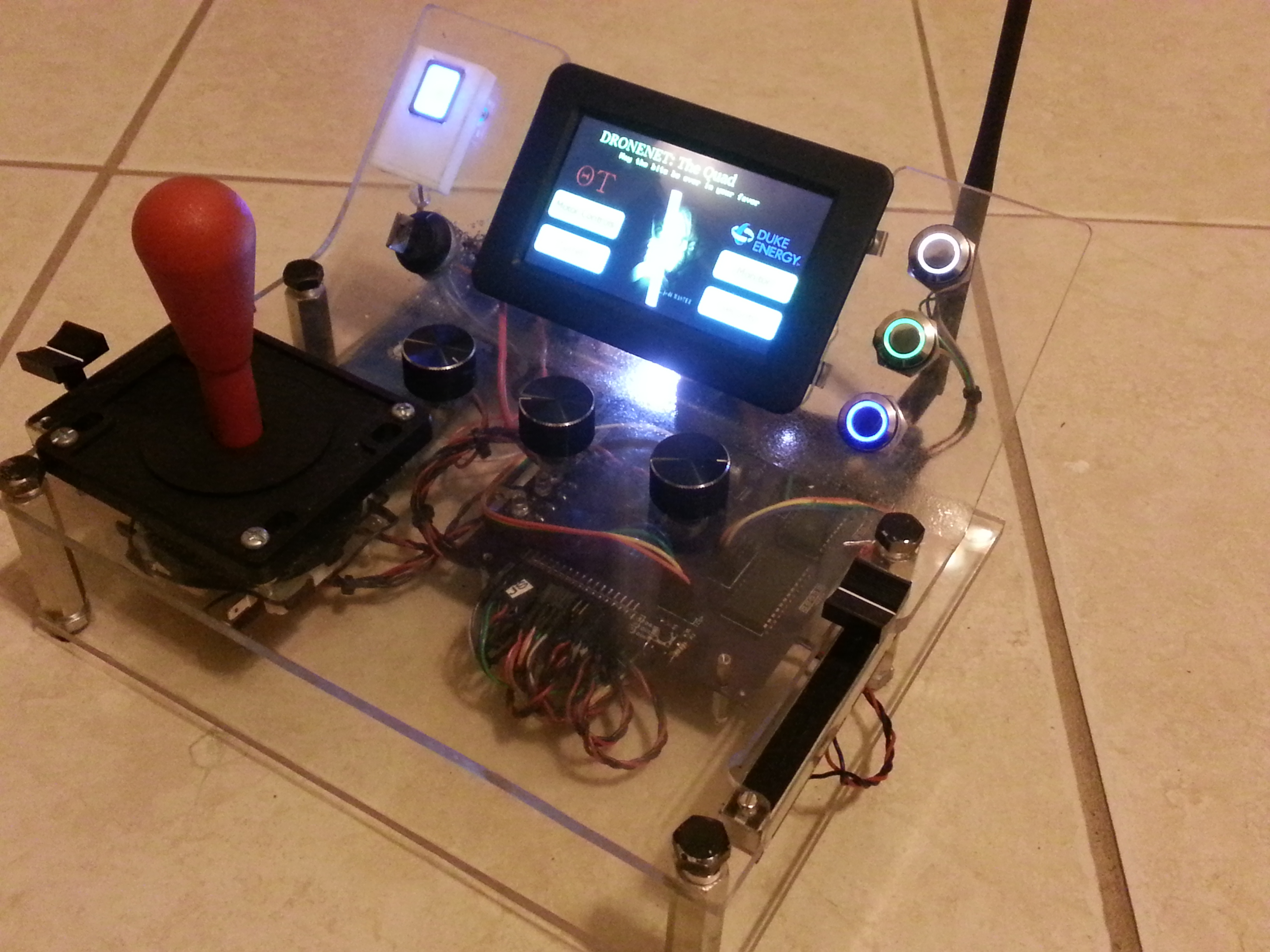The Project
Quadcopter

The unmanned aerial vehicle that we used in this project is a quadcopter. The main components of our UAV consist of: a flight controller, four motors, four electronic speed controllers (ESCs), wireless telemetry, and a battery. In addition to the main components we integrated a video transmitter and an on screen display module (OSD), and a sonar module.
Quadcopter Control Terminal

Our goal is for our UAV to be autonomous and hands off during missions, we needed a way to program mission parameters before takeoff. Since we are using the APM 2.6 flight controller based on the Atmega 2560 chip, we needed to use a supported software package for uploading the mission plans.
Michael Oborne’s Mission Planner software is currently the most supported software for completing this task. Mission Planner is, by far, the most used open source software for configuring and planning autonomous missions. This results in a large online community with many resources for developing an autonomous vehicle. This also means we can add features, if we so desired, in the future.
Mission Planner is a software package that allows us to configure the APM’s settings for our particular airframe setup, so we can achieve the best stability and control for manned and unmanned flights. This software package also supports calibration of the compass and our accelerometers. Mission Planner also allows us to test our motors as well as our sensors such as the sonar module.
Mission Planner allows us to plan missions with waypoints planned using a Google Maps interface within the software. Mission Planner makes this very easy with point-and-click waypoint entry. We also have the ability to download mission log files for analysis after our missions are completed and the copters have safely returned.
Mobile Landing Platform

The UAV Carrier consists of multiple subsystems housed within its shell. The mecanum wheeled drivetrain, the Bedini based regenerative charging system, and platform with the quad-locking system have all been designed to be the mobile base for the UAV. With it, we can deliver our UAV to a location and service the UAV’s energy needs all on location, extending the use of the UAV out in the field.
Mobile Landing Platform Control Terminal

The UAV Carrier Control Terminal is a self-contained system that forms the brains of the UAV Carrier. From this system, we can monitor, in real-time, most of the subsystems for the UAV Carrier, control the unique drivetrain, and lock and release the UAV from the platform.